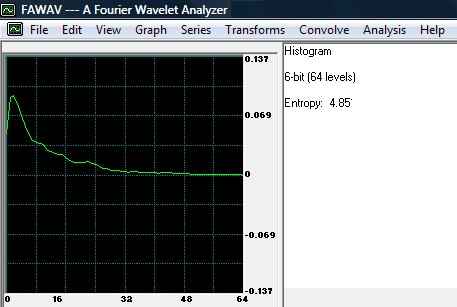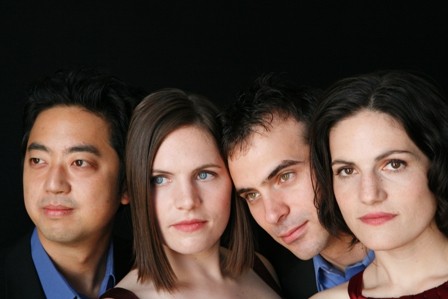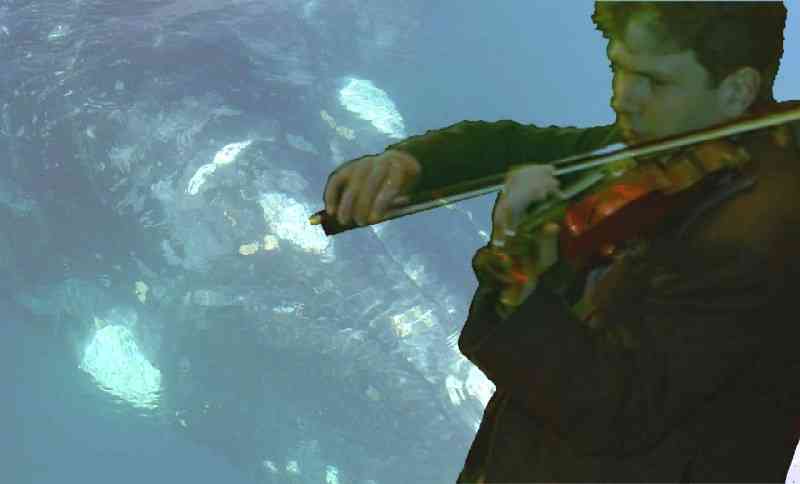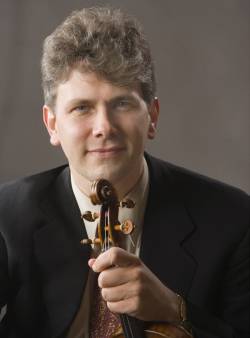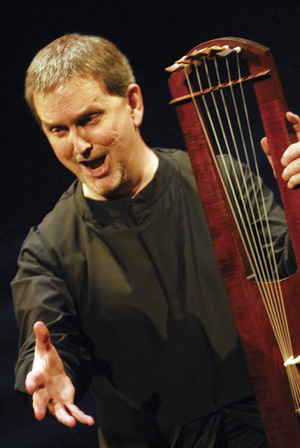
H wæt. We Gardena in gear-dagumM edievalist Benjamin Bagby performs the epic Anglo-Saxon poem, ‘Beowulf’, in his one-man drama on Saturday evening in Kansas City. Bagby performs on an historically-reconstructed six-stringed harp, part of which comes from remnants recovered from a medieval gravesite. The poem is the oldest extant complete poem in Old English, a narrative that tells the story of the chieftain, Beowulf, who defeats the monster, Grendel, in battle. The epic/mythical qualities of it are not unlike other Northern European epics, such as the Norse Eddas (sagas) or Kalevala.
þeodcyninga, þrym gefrunon,
hu ða æþelingas ellen fremedon.
Literal tr.:
What! We of the Spear-Danes in old days
of the people-kings the power heard
how the princes their brave deeds did.
R. Liuzza tr.:
Listen! We have heard of the glory in bygone days
of the folk-kings of the Spear-Danes—
how those noble lords did lofty deeds.
S. Heaney tr.:
So: The Spear-Danes in days gone by
and the kings who ruled them had
courage and greatness.
We have heard of these princes’ heroic
campaigns.”
B agby hails from a Germanic clan that emigrated from Jutland to northern England in about 630, and subsequently to colonial Virginia a millennium later. In addition to his activities as founder and director of the early music ensemble Sequentia, Benjamin writes about historical performance practice and teaches at the Sorbonne and North America. In 2003, Bagby developed the program ‘Chant Wars’ with Katarina Livljanic at Harvard. Bagby was educated at Oberlin College and at the Schola Cantorum in Basel. Bagby and Glagolitic chant scholar Katarina Livljanic were recently married.
T he ‘auspiciousness’ of the narrative of Beowulf is wonderfully portrayed by Bagby—whether you see him perform ‘live’ or on the excellent 2006 DVD. Having the work performed an old, old stone cathedral with hewn timbers for beams, and minimal central heating on a cold winter’s night helps to reinforce the momentousness of the epic. Beowulf aims to convey something of import to each contemporary listener, clan-member or not. Having the scary, decrepit manuscript projected in front of us adds still more.

T he Grendle ‘fight scene’, I suppose, is what gets the most attention, in almost any casual reading of the text. The mechanics of story-telling and drama: these are what English teachers tend to focus on when teaching Beowulf. The sheer exoticness of a text so old as this tends to limit the serious consideration of why it is the way it is. The ambiguities in the manuscript itself offer prodigious challenges to translators, never mind interpreters or theorists or ordinary readers/hearers.
B ut as we hear Bagby render this in performance today—in this time of widespread terrorism, regime-change and unplanned succession; amid conflicted amity, globalization and disputed sovereignty—what strikes me most is the theme of unrelenting confrontation—the necessity and inevitability of it. The human condition is perilous, no end in sight, and victories are always mixed, pyrrhic ones. Glory is the harbinger of doom. This mortal coil is in fact and above all else a coil—a chute that leads precipitously to our unbidden shuffling off it. No one gets out of here alive.
C oil — (n.) a spiral; tumults, troubles; a noisy disturbance, fuss, ado; the bustle and turmoil of this mortal life; (v.t.) to cull or sacrifice; to thrash; to lay in rings or spirals; to turn; to mound up; to stir.”
T he meaning might be: ‘when we have unwound and worked off this spool of mortality’.”I n Bagby’s wonderful delivery we hear vocal/musical and stylistic elements of these confrontations. Nothing sung/said is merely a formality. Not all of it is ‘consequential’. But all of it is confrontational. Hwæt! No ‘arrival’ lacks a ‘departure’. What comes in must go out; what goes up must come down. Beowulf ‘confronts’ any and all who would cling to wishful thinking or self-delusion. The end is not ‘tragic’; it just ‘is’.
— Schopenhauer, ‘Parerga & Paralipomena’, Volume 2, §232a.
W hy are there four funerals in Beowulf? Some people make a big thing about thematic repetition and the rhetoric of ‘aftermaths’. Yes, well... As a person descended from Scandinavian ancestors and as one who has read the Eddas since I was about 15, these epics and skaldic ‘lays’ and so on are just profoundly weird. At 3,182 lines length, its epic-oid length does lend to it something of the status of holy scripture—something more canonical and purposefully-structured than a clan fable.
B ut the monster slaying and fight scenes are playful—not unlike modern fantasy lit, if you ignore the extreme agèdness of the manuscript.
T he repetitions in Beowulf might be thought to be driven by the poetics or vocality of the thing. But the repeats have meta-linguistic effects, too. There is a normative fugue-like texture—which makes us notice the variations or ‘counterpoint’. These come alive in Bagby’s performance, whereas they are likely otherwise to remain mute on the printed page. You have to experience the thing ‘live’ to really ‘get it’.
T he epicness of Beowulf is conveyed by many aspects of its style—for example, the namelessness of many of the speakers. We don't know the messenger’s name; we don’t know the name of the mourning woman at the end of the poem; we don’t know the names of the retainers who ride around Beowulf’s funeral pyre. We’re not meant to know them; their names aren’t important to the story-as-epic. In fact, selective anonymity is part of what makes us know it’s an ‘epic’.
T he poet’s point of view is one recalling some much earlier time—and Bagby’s performance, a reenactment of that recall. He brings that recalled world “forward”, into the Present, just as the poet did into his own Present.
I ask myself, ‘Why?’ Why would anybody want to do this, as a performative sort of social or collective memory? For what purposes? What good would it do?
F or the poet, this wasn’t a clannish or courtly entertainment—nor, for us, is it some minor amusement to be consumed quickly and forgotten. It has real substance—weight. It’s a timely political statement—according to John Hill. He notes that the medieval world was “institutionally more complex... church and clergy, king and court. It was socially stratified for different levels of nobility and landholdings, including slavery, and was economically organized for both mundane and prestige trade... Wessex and Mercia and other Anglo-Saxon kingdoms are in a world of sometimes-hostile arrivals and departures, of aetheling tensions and assassinations... Perhaps the narrative pulse of Beowulf ... might be taken by Anglo-Saxons as a model, for their times, of good customs, heroic/fame-enhancing behaviour, and great kingship in at least two forms: the two-generational Danish model and the Beowulfian model of sovereignty, enlarged to include broader kinship amity.”
A rrivals, especially unanticipated ones, are electric with possibilities—with unexpected surprises ranging from the pleasant and desired, to the tense and potentially dangerous, to the terrible and unwished-for... Departures are often auspicious, full of promise and hope, although they also signify terror's monstrous flight... Each human departure involves an enlargement of possibility, with Beowulf's departure from the Danes being the most expansively promising one in the poem... In those moments, either positive or negative outcomes are possible, indeed sometimes intertwining or sometimes just lurking as potential. They inform the social action of the poem even as the many arrivals and departures create its overall and variable narrative pulse.”I n comparable fashion, the globalized world of 2009, torn by conflict and economic recession as it is, is institutionally still more complex. More complex, even, than just one year ago. Traditional governance and sovereignty are seriously disrupted in several parts of the world—including, so it seems, here in the U.S. Regulatory institutions seemingly have been co-opted by the very people and organizations who they were intended to regulate, with catastrophic results.
— John Hill, p. 5.
I n other words, Beowulf is way more than a ‘creative anachronism’ or medieval ‘curio’ or museum-piece. It’s a parable for—oh, say, now.

K ennings’ are a significant feature in Beowulf. They’re evocative phrases that stand for everyday things. They’re not cute euphemisms/amphilogisms, nor are they comedic sarcasms. They’re not coy ways to avoid saying an ‘unlucky’ word—like ‘death’—thereby to avoid inadvertently inviting the thing-that-shall-not-be-named into your midst (as the Tlingit and other traditional peoples believe).
Y es, the kennings are alliteration- and meter-appropriate “fits” for the contexts where they occur in the text. But they’re far more than that—and it’s ‘cool’ to hear Bagby perform these gems and pour into them their real, full-blown meaning.
F or example, the skald calls the clan ‘Spear-Danes’—evoking a bellicosity that maybe Danes aren’t so famous for anymore. He calls the sea a ‘whale-road’—this evokes a liveliness and interspecies danger that we scarcely think of anymore, in the era of modern ships, and commoditized human-centric seaway-as-inanimate-resource, and GPS nav. A king is called a ‘ring-giver’ or, at other times, a ‘breaker-of-rings’—evoking not only autocratic privilege but merit-based social generosity and, alternately, unjust/capricious renunciations by those who wield power. The king as ‘guardian-of-hoards’ suggests not only personal wealth and power but a devotion to the public interest and the commonweal—far more public-centered than current or recent notions of a ‘Strong Unitary Executive’.
- Sleep-of-the-sword—Death
- Mighty-wanderer-of-wastelands—horror, Death (Grendel)
- Raven-harvest—battle-field corpses
- Battle-sweat—blood
- War-friend—sword
- Mind’s-worth—honor, valor
- Horse-of-the-whale-road—ship
- Foamy-necked-floater—ship
- Gold-friend—retainer, loyal knight
- Gannett’s-bath—sea
- World-candle—sun
T he dyers of the wolf’s fangs
squandered the Reddened Swan’s meat;
The hawk of the sword’s dew
fed on the heroes of the field—
The serpents of the Geats’ moons
fulfilled the Will of the Irons.
... by Egil Skallagrimsson, warrior/embedded-journalist at Brunanburh.”
— Jorge Luis Borges, The kenning. New Yorker, 26-JAN-1976.
- Bagby performance of Beowulf, Kansas City, 28-FEB-2009
- Bagby page at L'université Paris Sorbonne Paris IV UFR de Musique et Musicologie
- Bagby website
- Bagby page at Aaron Concert Artists Inc
- ChantWars page at Harvard Divinity School
- Sequentia medieval music ensemble website
- Beowulf at Literapedia
- Beowulf resources at Heorot.dk
- BeowulfTranslations.net
- Old English epithets at ORT.org [1MB pdf]
- Anderson S, ed. Beowulf: Longman Cultural Edition. Longman, 2004.
- Bagby B. Beowulf. (Koch Vision, 2006.)
- Crownover A. Wealtheow: Her Telling of Beowulf. Iroquois, 2008.
- Ford J, Gummere F, ed & tr. Beowulf in Old English and New English. El Paso Norte, 2005.
- Frantzen A. Before the Closet: Same-Sex Love from ‘Beowulf’ to ‘Angels in America’. Univ Chicago, 1998.
- Fulk R, Bjork R, Niles J, eds. Klaeber's Beowulf. 4e. Univ of Toronto, 2008.
- Gaiman N, Avary R. Beowulf: The Script Book. Harper, 2007.
- Heaney S. Beowulf. Faber & Faber, 2000.
- Hill J. Narrative Pulse of Beowulf: Arrivals & Departures. Univ of Toronto, 2008.
- Hinds G. Beowulf: Doom of Glory. Comic, 2000.
- Kiernan K. Beowulf. Univ Michigan, 1997.
- North R, Allard J. Beowulf & Other Stories: A New Introduction to Old English, Old Icelandic and Anglo-Norman Literatures. Longman, 2007.
- Orchard A. A Critical Companion to Beowulf. Brewer, 2004.
- Ringler D, tr. Beowulf: A New Translation for Oral Delivery. Hackett, 2007.
- Risden E. Beowulf for Business. Whitston, 2007.
- Shrader R. Beowulf's obsequies and the Roman epic. Comp Lit 1972; 24:237-59.
- Shippey T. Beowulf: The Critical Heritage. Routledge, 1998.
- Tolkien J. Beowulf and the Critics. Arizona Center for Medieval & Renaissance Studies, 2002.
- DSM. Bagby’s Beowulf: Musicological Sci-Fi, or Sound Historiography? CMT blog, 20-JUN-2007.



